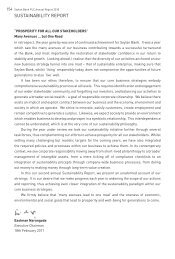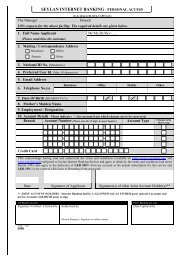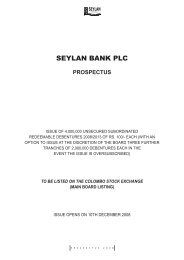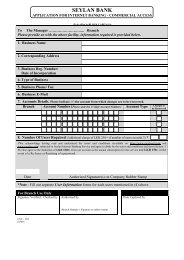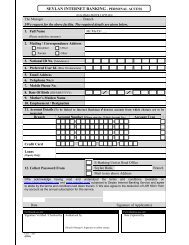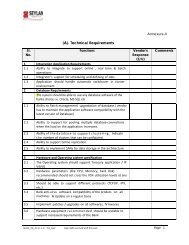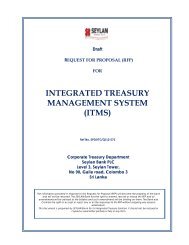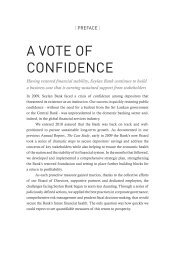The Case Study - Seylan Bank
The Case Study - Seylan Bank
The Case Study - Seylan Bank
You also want an ePaper? Increase the reach of your titles
YUMPU automatically turns print PDFs into web optimized ePapers that Google loves.
A Crisis of Confidence19patient and give the Company time to make good on its obligations. <strong>The</strong>n, on27th December the Executive issued a further statement, which proved to bethe inadvertent triggering event for what happened next to <strong>Seylan</strong> <strong>Bank</strong>.In retrospect it’s generally agreed that what Dr. Kotelawala meant tocommunicate, as he tried once again to allay concerns over Golden Key, was thatequity in other companies within the Ceylinco Group would be redeployed tohelp the failed credit card company pay off its depositors and creditors. However,when the Chairman specifically referenced selling his conglomerate’s stake in<strong>Seylan</strong> <strong>Bank</strong>, it was misinterpreted - through an unfortunate combination ofunclear reporting and public misunderstanding - as meaning that Ceylinco woulddirectly allocate bank assets in order to refund Golden Key deposits. Panicked<strong>Seylan</strong> <strong>Bank</strong> customers, convinced that their savings were about to be divertedtoward a Ceylinco bail out, rushed to their home branches to make withdrawals.In a matter of hours, a classic bank run was rapidly gaining momentum.A Run on the <strong>Bank</strong>Over the next few days, long queues formed outside <strong>Seylan</strong> <strong>Bank</strong> locationsacross Sri Lanka. Branch staff faced some tense moments, between fieldingquestions from upset customers and securing additional funds from headoffice to meet the extraordinary demand for withdrawals. Contrary to somemedia rumours, the <strong>Bank</strong> never attempted to stop withdrawals. Indeed, insome branches, money was conspicuously displayed to reassure anxiousdepositors waiting in line that there were sufficient funds to cover their requests.Meanwhile, the corporate management team, faced with a shrinking numberof funding lines from other banks, worked closely with those institutions thatmaintained support - <strong>Bank</strong> of Ceylon, Wachovia <strong>Bank</strong>, Standard Chartered<strong>Bank</strong>, Pan Asia <strong>Bank</strong>, Nations Trust <strong>Bank</strong>, People’s <strong>Bank</strong>, HSBC and State<strong>Bank</strong> of India - to ensure a steady supply of cash.<strong>Seylan</strong> <strong>Bank</strong> staff worked with remarkable diligence and professionalcomposure in handling a crisis situation none of them had ever confrontedbefore. <strong>The</strong>y managed for the most part to keep customers calm and in somecases even managed to convince depositors to leave their accounts intact. But, itwas clear that this impressive grassroots effort could only go so far. History heldplenty of examples of <strong>Bank</strong> runs that had quickly spiralled out of control, notonly bringing down the original institutions but also threatening entire nationaleconomies. With the worldwide economic downturn already promptingcomparisons to the Great Depression of the 1930s, who could say how far thetremors from one national bank failure might reach?Clearly something had to be done - and at the highest level of Sri Lanka’sbanking system, a remarkable recovery effort was already in motion.



